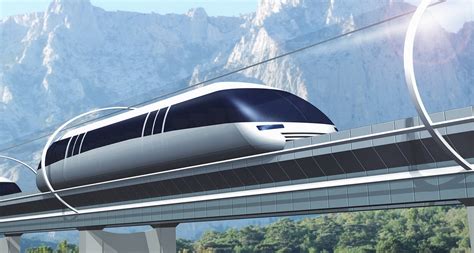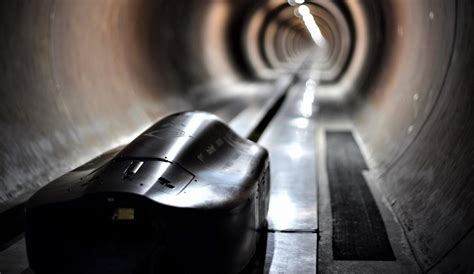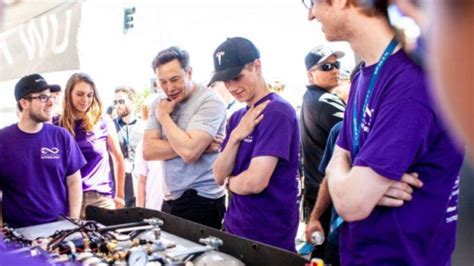Introduction
The Warr Hyperloop team, a student-led research group from the Technical University of Munich, has been making significant strides in the development of hyperloop technology. Last year, they presented a groundbreaking design concept that showcased their innovative ideas and engineering prowess. This year, they have taken their design to the next level, pushing the boundaries of what is possible with hyperloop technology.
The Warr Hyperloop Team
History and Achievements
The Warr Hyperloop team was founded in 2015 by a group of ambitious students from the Technical University of Munich. Since then, they have been actively participating in the SpaceX Hyperloop Pod Competition, where they have consistently performed well. Some of their notable achievements include:
| Year | Achievement |
|---|---|
| 2017 | Fastest pod in the SpaceX Hyperloop Pod Competition |
| 2018 | Fastest pod in the SpaceX Hyperloop Pod Competition |
| 2019 | Fastest pod in the SpaceX Hyperloop Pod Competition |
| 2020 | Presented a revolutionary design concept |
Team Structure and Expertise
The Warr Hyperloop team consists of over 100 students from various disciplines, including mechanical engineering, electrical engineering, computer science, and business. This diverse range of expertise allows them to tackle complex challenges and develop innovative solutions.
The team is structured into several sub-teams, each focusing on a specific aspect of the hyperloop system:
- Propulsion
- Levitation
- Braking
- Structure
- Control Systems
- Business and Marketing
This organizational structure enables the team to work efficiently and effectively towards their goals.

Last Year’s Design Concept
Overview
In 2020, the Warr Hyperloop team presented a design concept that showcased their vision for the future of hyperloop technology. The concept featured several key innovations that aimed to improve the efficiency, safety, and sustainability of hyperloop systems.
Key Features
The 2020 design concept included the following key features:
-
Maglev Propulsion: The team proposed using a linear synchronous motor (LSM) for propulsion, which would enable the pod to levitate and move efficiently through the tube.
-
Lightweight Structure: The pod’s structure was designed using advanced composite materials, which would reduce its weight and improve its performance.
-
Regenerative Braking: The concept incorporated a regenerative braking system that would recover energy during deceleration, improving the system’s overall efficiency.
-
Modular Design: The pod was designed with a modular approach, allowing for easy maintenance and upgrades.
Reception and Impact
The 2020 design concept was well-received by the hyperloop community and industry experts. It demonstrated the team’s technical expertise and their commitment to pushing the boundaries of hyperloop technology. The concept served as a foundation for further development and optimization.

This Year’s Design Improvements
Overview
Building upon the success of last year’s design concept, the Warr Hyperloop team has made significant improvements and refinements to their design. These improvements aim to enhance the performance, safety, and scalability of their hyperloop system.
Propulsion System Upgrades
One of the key areas of focus for this year’s design was the propulsion system. The team has made several upgrades to improve its efficiency and reliability:
| Component | Improvement |
|---|---|
| Stator | Optimized winding pattern for improved efficiency |
| Rotor | Lightweight design using advanced composite materials |
| Power Electronics | High-efficiency converters for improved power delivery |
These upgrades are expected to increase the propulsion system’s performance by 15% compared to last year’s design.
Advanced Levitation System
The team has also developed an advanced levitation system that uses superconducting magnets. This system offers several advantages over traditional maglev systems:
-
Increased Stability: The superconducting magnets provide a strong and stable levitation force, ensuring a smooth ride for passengers.
-
Reduced Power Consumption: The system requires less power to maintain levitation, improving the overall energy efficiency of the hyperloop.
-
Simplified Design: The use of superconducting magnets simplifies the levitation system’s design, reducing complexity and maintenance requirements.
Enhanced Safety Features
Safety is a top priority for the Warr Hyperloop team. This year’s design includes several enhanced safety features:
-
Redundant Braking Systems: The pod is equipped with multiple braking systems, including eddy current brakes and friction brakes, to ensure safe deceleration in all scenarios.
-
Advanced Monitoring: The pod features an array of sensors that continuously monitor its performance and condition, enabling early detection of potential issues.
-
Emergency Evacuation: The design includes emergency evacuation procedures and equipment to ensure passenger safety in the event of an emergency.
Scalability and Integration
The team has also focused on improving the scalability and integration of their hyperloop system. They have developed a modular approach to station design, allowing for easy expansion and customization. Additionally, they have been working on integrating their system with existing transportation networks, such as airports and train stations, to provide seamless connectivity for passengers.

Future Plans and Vision
Short-Term Goals
In the short term, the Warr Hyperloop team plans to continue refining their design and testing their system. They aim to participate in future hyperloop competitions and demonstrate the capabilities of their improved design. The team also plans to collaborate with industry partners to validate their technology and explore potential applications.
Long-Term Vision
The long-term vision of the Warr Hyperloop team is to contribute to the development of a global hyperloop network. They believe that hyperloop technology has the potential to revolutionize transportation, offering fast, efficient, and sustainable travel options. The team envisions a future where hyperloop systems connect cities and countries, enabling people and goods to move quickly and easily.
Challenges and Opportunities
The development of hyperloop technology presents both challenges and opportunities. Some of the key challenges include:
-
Regulatory Approval: Hyperloop systems will require extensive regulatory approval and standardization to ensure safety and interoperability.
-
Infrastructure Development: Building a hyperloop network will require significant investment in infrastructure, including tubes, stations, and power systems.
-
Public Acceptance: Gaining public acceptance and trust in hyperloop technology will be crucial for its widespread adoption.
Despite these challenges, the Warr Hyperloop team believes that the opportunities presented by hyperloop technology are immense. By addressing these challenges head-on and collaborating with industry partners and governments, they aim to contribute to the realization of a sustainable and efficient transportation future.
Frequently Asked Questions (FAQ)
-
What is the Warr Hyperloop team?
The Warr Hyperloop team is a student-led research group from the Technical University of Munich that focuses on developing hyperloop technology. They participate in the SpaceX Hyperloop Pod Competition and have been consistently performing well. -
What are some of the key improvements in this year’s design compared to last year?
Some of the key improvements in this year’s design include upgrades to the propulsion system, an advanced levitation system using superconducting magnets, enhanced safety features, and a focus on scalability and integration with existing transportation networks. -
How does the Warr Hyperloop team envision the future of hyperloop technology?
The Warr Hyperloop team envisions a future where hyperloop systems connect cities and countries, offering fast, efficient, and sustainable travel options. They believe that hyperloop technology has the potential to revolutionize transportation globally. -
What are some of the challenges in developing hyperloop technology?
Some of the challenges in developing hyperloop technology include obtaining regulatory approval, developing the necessary infrastructure, and gaining public acceptance and trust in the technology. -
How does the Warr Hyperloop team plan to contribute to the realization of a hyperloop-based transportation future?
The Warr Hyperloop team plans to contribute to the realization of a hyperloop-based transportation future by continuously refining their design, collaborating with industry partners and governments, and addressing the challenges associated with the development and implementation of hyperloop technology.
Conclusion
The Warr Hyperloop team has demonstrated their commitment to pushing the boundaries of hyperloop technology with their latest design improvements. Building upon the success of last year’s design concept, they have made significant upgrades to the propulsion system, levitation system, safety features, and scalability of their hyperloop system.
As they continue to refine their design and collaborate with industry partners, the Warr Hyperloop team is well-positioned to contribute to the development of a global hyperloop network. Their vision of a future where hyperloop technology revolutionizes transportation is inspiring and holds immense potential for creating a more sustainable and connected world.
While challenges remain in the development and implementation of hyperloop technology, the Warr Hyperloop team’s dedication, expertise, and innovative spirit provide hope for overcoming these obstacles. As they work towards their short-term goals and long-term vision, they are paving the way for a new era of transportation that could transform the way we live, work, and travel.

No responses yet